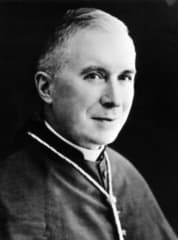アヴェ・マリア!
愛する兄弟姉妹の皆様、
トリノの聖骸布に、ギリシア語で "(I)esou(s) Nnazarennos" また "iber" (これはティベリウス "Tiberiou" という皇帝の名前の一部)という名前がうっすらと書かれていることが発見された、ということを教えてもらいました。
バルバラ・フラーレ女史(Dr Barbara Frale)によると、聖骸布にギリシア語とラテン語とアラマイ語とが書かれてあるそうです。文字は聖骸府に「書き散らされて」おり、イエズス・キリストの生きていた当時の中東の字体で書かれてます。バルバラ・フラーレ博士によると、当時のローマ官僚によって誰の遺体かが区別できるように書かれたことであろうとのことです。
イタリア語で書かれたバルバラ・フラーレの本 "La Sindone di Gesu Nazareno" によると、「ナザレトのイエズス、(民衆を反乱に拐かした罪で断罪され、ティベリウス皇帝の第16年に死刑、午後三時におろされる」
しかしそれに対して、単なるイマジネーションに過ぎないという反論もあります。
英語でこんな記事がありました。
Death certificate is imprinted on the Shroud of Turin, says Vatican scholar
A Vatican scholar claims to have deciphered the "death certificate" imprinted on the Shroud of Turin, or Holy Shroud, a linen cloth revered by Christians and held by many to bear the image of the crucified Jesus.
Dr Barbara Frale, a researcher in the Vatican secret archives, said "I think I have managed to read the burial certificate of Jesus the Nazarene, or Jesus of Nazareth." She said that she had reconstructed it from fragments of Greek, Hebrew and Latin writing imprinted on the cloth together with the image of the crucified man.
The shroud, which is kept in the royal chapel of Turin Cathedral and is to be put in display next spring, is regarded by many scholars as a medieval forgery. A 1988 carbon dating of a fragment of the cloth dated it to the Middle Ages.
However Dr Frale, who is to publish her findings in a new book, La Sindone di Gesu Nazareno (The Shroud of Jesus of Nazareth) said that the inscription provided "historical date consistent with the Gospels account". The letters, barely visible to the naked eye, were first spotted during an examination of the shroud in 1978, and others have since come to light.
Some scholars have suggested that the writing is from a reliquary attached to the cloth in medieval times. But Dr Frale said that the text could not have been written by a medieval Christian because it did not refer to Jesus as Christ but as "the Nazarene". This would have been "heretical" in the Middle Ages since it defined Jesus as "only a man" rather than the Son of God.
Like the image of the man himself the letters are in reverse and only make sense in negative photographs. Dr Frale told La Repubblica that under Jewish burial practices current at the time of Christ in a Roman colony such as Palestine, a body buried after a death sentence could only be returned to the family after a year in a common grave.
A death certificate was therefore glued to the burial shroud to identify it for later retrieval, and was usually stuck to the cloth around the face. This had apparently been done in the case of Jesus even though he was buried not in a common grave but in the tomb offered by Joseph of Arimathea.
Dr Frale said that many of the letters were missing, with Jesus for example referred to as "(I)esou(s) Nnazarennos" and only the "iber" of "Tiberiou" surviving. Her reconstruction, however, suggested that the certificate read: "In the year 16 of the reign of the Emperor Tiberius Jesus the Nazarene, taken down in the early evening after having been condemned to death by a Roman judge because he was found guilty by a Hebrew authority, is hereby sent for burial with the obligation of being consigned to his family only after one full year". It ends "signed by" but the signature has not survived.
Dr Frale said that the use of three languages was consistent with the polyglot nature of a community of Greek-speaking Jews in a Roman colony. Best known for her studies of the Knights Templar, who she claims at one stage preserved the shroud, she said what she had deciphered was "the death sentence on a man called Jesus the Nazarene. If that man was also Christ the Son of God it is beyond my job to establish. I did not set out to demonstrate the truth of faith. I am a Catholic, but all my teachers have been atheists or agnostics, and the only believer among them was a Jew. I forced myself to work on this as I would have done on any other archaeological find."
The Catholic Church has never either endorsed the Turin Shroud or rejected it as inauthentic. Pope John Paul II arranged for public showings in 1998 and 2000, saying: "The Shroud is an image of God's love as well as of human sin. The imprint left by the tortured body of the Crucified One, which attests to the tremendous human capacity for causing pain and death to one's fellow man, stands as an icon of the suffering of the innocent in every age." Pope Benedict XVI is to pray before the Shroud when it is put on show again next Spring in Turin.
日本語の記事です。
トリノの聖骸布にキリストの名前 歴史研究家が発見と発表
【ローマ共同】ローマ法王庁(バチカン)の歴史研究家バルバラ・フラーレさんは、キリストの遺体を包んだ亜麻布と信じられている「トリノの聖骸布」から、キリストの名前や「処刑された」と書かれた文字を発見したと発表した。20日付のイタリア紙レプブリカなどが伝えた。
聖骸布をめぐっては、中世以降の偽物との説もあり論争が続いている。フラーレさんは今回の発見で、本物である可能性が強まったと指摘した。
聖骸布にはやせた男性の全身像の影が写っており、文字は顔の周辺で見つかった。非常に薄かったため、コンピューターの画像処理で、くっきりと浮かび上がらせた。
その結果、キリストの生きていた当時、使われていたアラム語やギリシャ語、ラテン語で、処刑が行われたことを示す文字やキリストの呼び名だった「ナザレのイエス」の文字が見つかった。
当時、処刑された人間の遺体は一定期間をおいて遺族に渡す風習があり、遺体判別のため名前などを書いた紙を布に張り付けた。フラーレさんは文字は、紙のインクが布に染み込んだものと推測している。
別の英語の記事:
Researcher: Faint writing seen on Shroud of Turin By ARIEL DAVID
ROME ― A Vatican researcher has rekindled the age-old debate over the Shroud of Turin, saying that faint writing on the linen proves it was the burial cloth of Jesus.










